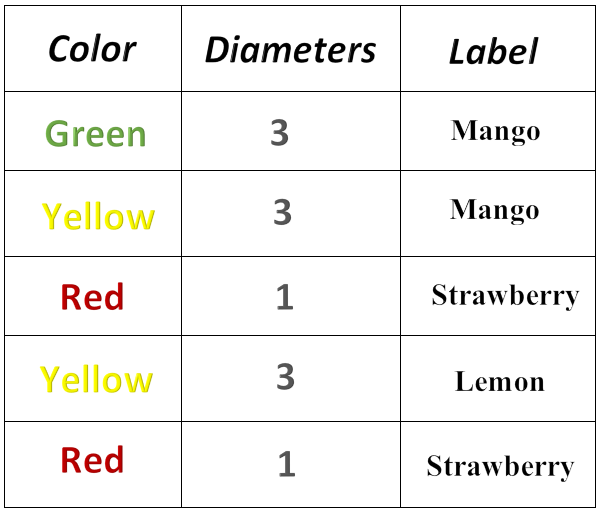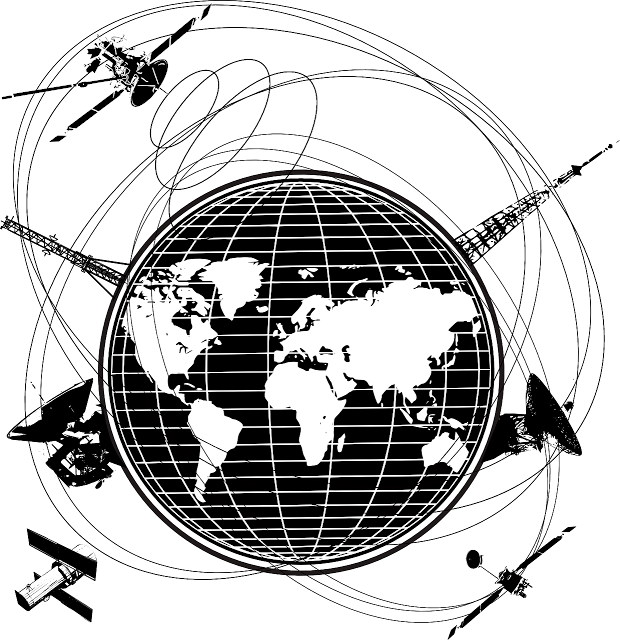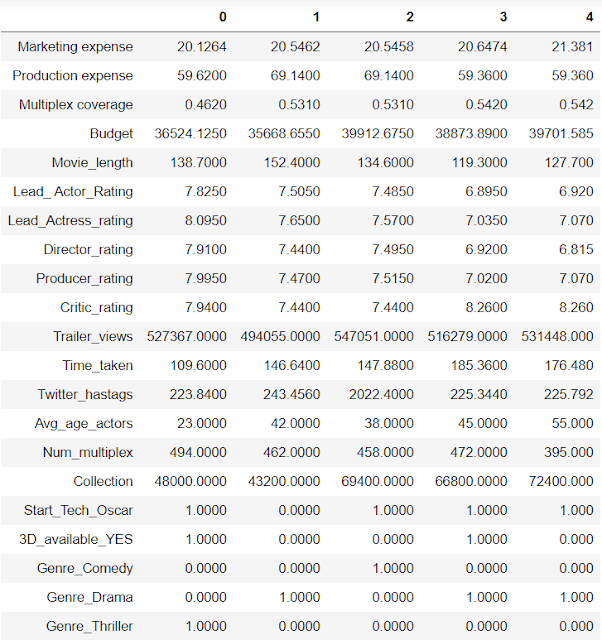14 MOST ESSENTIAL Concepts About Decision Tree You Need To Know Right Now [BE A PRO]
Decision Tree is a classification algorithm which
comes under the Supervised Learning Technique.
In this
revolutionizing world of Machine Learning we had covered various topics such as:
and many more
interesting topics in a very simple way with minimum use of complex
mathematics. We had also included multiple examples of codes for a better understanding
of there implementation.
So our
today’s topics is Decision Tree. A topic that every Machine Learning
enthusiastic is awarded about.
Before directly
diving into Decision Tree. Let us see, what all things that we are going to
accomplish in this blog.
(1) What is a Tree?
(2) CART(Classification And Regression Tree)
(3) What is Classification?
(4) Why we need to Classify?
(5) What is Decision Tree?
(6) Important Terminologies of a Decision Tree
(7) What is Entropy?
(8) How does Decision Tree work?
(9) What is the Gini Index?
(10) What is Information Gain?
(11) Application of Decision Tree
(12) Advantages of Decision Tree
(13) Disadvantages of Decision Tree
(14) Decision Tree Example
I hope The agenda of today's session is absolutely clear to you all.
Now Let’s
dive in.
(1) What is a Tree?
- In linear the data structure, data is organized in sequential order, and in the non-linear data
structure, data is organized in random order.
- The tree is a very popular data structure used in a wide range of applications. A Tree data
structure can be defined as follows.
- A tree is a non-linear data structure that organizes data in a hierarchical structure.
Root:
-In a Tree data structure, the first node is called the Root Node. Every Tree must have a root node.
-Root node is
the origin of tree data structure. In any tree, there must be only one root
node. We never have multiple root nodes in a Tree.
Parent:
- In a Tree type data structure, the node which is a predecessor of any node is called as Parent
Node.
- Parent Node
can also be defined as “The Node Which Has Child/Children's”.
-The Root
Node is the only node that does not have a Parent Node.
Child:
- The immediate successor of a node is called as Child Node.
- In a Tree,
any parent node can have any number of Child Nods.
Siblings:
- Children of
the same Parent is called as Siblings. In simple words, the nodes
with the same parent are called sibling nodes.
Subtree:
- A Subtree is
a set of nodes and edges comprised of a parent and all the descendants of
that parent.
Leaf Node:
- The nodes
which do not have any child is called Leaf Node.
- Leaf Nodes
are called terminal nodes.
(2) CART( Classification And Regression Tree)
(i) Classification
(ii) Regression
(i) Classification:
- Classification
where all the output is categorical i.e either they are True or False, Male or
Female etc or the output belongs to certain category i.e did you scored A, B, C
or D grade in your final examination etc.
- In
Classification, a Classification Tree will determine a set of logical if-then
conditions to classify problems.
(ii) Regression:
- Here
we predict the output value as a specific number.
- In
Regression, a Regression Tree is used when the target variable is numerical or
continuous in nature.
- We
fit a regression model to target variables using each of the independent
variables.
- Each
split is made based on the sum of the square error.
For
today’s topic we are going to only focus on the Classification Trees.
(3) What is Classification?
- Classification is a process of categorizing a given
set of data into classes, It can be the performance on both structured or
unstructured data.
- The process
started with predicting the class of given data points.
- The classes
are often referred to as target, label, or categories.
Classification is a technique of categorizing the observation into different category.
Basically we
are doing is, we are taking data analyzing it, and on the basis of some of the conditions we are dividing it into various categories.
(4) Why do we classify?
- We classify
it to perform predictive analysis on it.
For Example :
When we receive an E-mail, the machine predicts it either it
could be a spam or not spam. On the bases of that prediction we add that
particular mail to the respected folder.
In general
our Classification algorithm handles questions like:
a.) Is this data belong to A, B, or C.
b.) It is
a Spam or a Ham.
c.) Is that
person is a Male or a Female?
(5) What is
Decision Tree?
A Decision Tree is a graphical representation of all the
possible solutions to a decision based on certain conditions.
We can also say that the decision tree is a flowchart or a
tree shape diagram which always starts with a Root Node. Each branch of the
tree represents a possible decision, occurrence, or reaction.
Decisions made can be easily explained.
Let’s see an example where you want to purchase a house.
In this example of the Decision Tree, we want to buy a but at certain conditions. Such as the price of the house should be ₹.5000000 if it's in Mumbai than buy it or else don't buy it and if it's in Pune check if it has 2 BHK or not if it's 2 BHK then purchase the house or else don't purchase the house.
(6) Important Terminologies of a Decision Tree
Basically
there are 6 main terminologies regarding Decision Tree.
(a) Entropy
(b) Pruning
(c) Gini Index
(d)
(e)
(f)
(a) Entropy:
Entropy
is the measure of Randomness or Unpredictability in the Dataset.
If I tell you to pick you the fruit from the basket with your eyes close then the entropy will be max. But in real life entropy should be minimum.
 |
| FRUIT BASKET |
If I tell you to pick you the fruit from the basket with your eyes close then the entropy will be max. But in real life entropy should be minimum.
(b) Pruning:
Basically
we can say that this is the opposite of Splitting, in this we remove unwanted
branches from the tree.
For
Example :
We removed
the unwanted branch from the tree because we don’t want it.
(c) Gini Index :
The measure of impurity (or purity) used in building Decision Tree in CART is Gini
Index.
(d) Information Gain :
The
information Gain is the decrease in entropy after a dataset is split on the
basis of an attribute. Constructing a decision tree is all about a fighting
attribute that returns the highest information gain.
Information Gain = Entropy(s) – [
(Weighted Average) * Entropy(each feature)]
(e) Reduction in Variance :
Reduction
invariance is an algorithm used for continuous target variable (regression
problems). This split with lower variance is selected as the criteria to split
the population.
(f) Chi-square :
It is an
algorithm to find out the statistical significance between the difference
between sub-nodes and parent node.
Now
the main question is how will you decide the best attribute? For now just
understand that you need to calculate something called Information Gain.
The
attribute with the highest information gain is considered as best. Before
understanding information gain let’s first understand entropy.
(7) What is Entropy?
Entropy
is the metric, which measures the impurity of something or in other words you
can say that it is a first step to do before you solve the problem for Decision
Tree.
For
Example :
Let’s
say you have a dataset and you are trying to distinguish between various fruits
and instead of taking multiple factors under consideration, you only took color
as the only feature for differencing the fruits.
So
what will happen is, for example there are green apple and red apple and strawberry
in the dataset. You will keep the red apples and the strawberry in one basket.
So here we can say that in this impurity is not zero which means that the
impurity in this exists.
Now
come back to the word Entropy.
* Defines
randomness in the data.
* Entropy
is just a metric that measures the impurity.
* It is
the first step to solve the problem of a decision tree.
From
the above graph you can see that if the probability is 0 or 1 then it means
that they are highly impure and if the value is 0.5 then it means that the
value is very pure.
Now
you will be thinking why the value of the entropy is pure at 0.5? Let me derive
it mathematically.
As you
can see that the formula of entropy is :
Entropy(s)
= -P(yes) log2 P(yes) – P(no) log2 P(no)
Where;
* s is
the total sample space.
* P(yes)
is the probability of Yes.
* P(no)
is the probability of No.
If
number of yes = number of no i.e P(s) = 0.5
→ Entropy(s) = 1
If it
contains all yes or all no i.e P(s) = 1 or 0
→ Entropy(s) = 0
Let’s
start with conditions :
1.) Condition 1 Probability = 0.5
E(s)
= -P(yes) log2 P(yes)
When
P(yes) = P(no) = 0.5 i.e YES + NO = Total Sample(s)
E(s)
= 0.5
Now
substitute that value 0.5 into the formula.
E(s)
= 0.5 log2 0.5 – 0.5 log2 0.5
E(s)
= 0.5(log2 0.5 – log2 0.5)
E(s)
= 1
2.) Condition 2 Either we have total YES or total NO
(i) Total
YES :
E(s)
= -P(yes) log2 P(yes)
When
P(yes) = 1 i.e YES = Total Sample(s)
E(s)
= 1 log2 1
… log 1 = 0
E(s)
= 0
(ii)Total
NO :
E(s)
= -P(no) log2 P(no)
When
P(no) = 1 i.e YES = Total Sample(s)
E(s)
= 1 log2 1
… log 1 = 0
E(s)
= 0
(8) How does Decision Tree work?
I am
sure most of you have a general idea about how a decision tree works, but for
better understanding and for clear knowledge let’s take an example dataset and
understand it diagrammatically.
In
this dataset each row is an example and the initial 2 columns provide features
or attributes that describe the data and the last column gives the label or
the class we want to predict.
Now if
you look at this dataset this is very straight forward except from 1 thing. If
you look at our 4th label column and compare that with 1st and 2nd labels you will notice that the features are the same but the label is different.
Let’s
see diagrammatically how the decision tree handles this case.
In
order to build this decision tree we will be using CART which we have discussed
above.
Step1:
We
will start with the root node as a tree and all the nodes receive a list of
rows as input and root will receive the entire training dataset.
Step2:
Now
each node will ask True or False questions about one feature and in response to
that question we will split or partition the dataset into 2 different subsets
these subsets then become an input to 2 child nodes. The goal of the question is
to finally unmix the label as we proceed down or in other words to produce the purest possible distribution of the labels at each node.
Step3:
The input of this node contains only one single type of label so we could say that
it’s perfectly unmixed there is no uncertainty about the type of label as it
consists of the only strawberry. On the other hand labels in this node are still
mixed up. So we will ask another question to further drill it down. But before
that, we need to understand which question to ask and when to do that we need
to quantify how much question helps to unmix the label and then we can quantify
the amount of uncertainty at a single node using a metric called Gini impurity
and we can quantify how much a question reduces that uncertainty using a concept called Information Gain. We will use this to ask the best questions
at each point and then we will iterate the steps and we will recursively build
a tree on each of the new nodes.
Step4:
We
will continue to divide the data until there are no further questions to ask
and then we will finally reach our leaf.
(9) What is the Gini Index?
Gini index means that, if we select 2 items from a given
dataset at random then they must be of same probability and class for this population
should be pure.
It works with the categorical target variable “True” or “False”.
1.
It performs only
Binary (0/1) splits
2.
Higher the value of
Gini index is higher the homogeneity.
3.
CART
(Classification and Regression Tree) uses the Gini method to create binary splits.
Steps to Calculate Gini for a split :
1.
Calculate Gini for
sub-nodes, using formula sum of the square of probability for True and False
(p²+q²).
2.
Calculate the Gini
index for split using the weighted Gini score of each node of that split.
(10) What is Information Gain?
In Information Gain, Less
impure node requires less information to describe it and a more impure node
requires more information to describe it. Information theory is a measure to
define this degree of disorganization in a system known as Entropy. If
the sample is completely homogeneous, then the entropy is 0 and
if the sample is equally divided into half at each side i.e 50% - 50%
then it has an entropy of 1.
Entropy can be calculated
using the formula:
Entropy = -p log2
p — q log2q
Here p is the probability
of success and q is the probability of failure in that node. Entropy is also
used with a categorical target variable. It chooses the split which has the lowest
entropy compared to the parent node and other splits. The lesser the entropy, the
better it is.
Steps to calculate the entropy
for a split:
Step 1: Calculate entropy of
parent node.
Step 2: Calculate entropy of
each individual node of split and calculate the weighted average of all sub-nodes
available in the split.
We can derive information
gain from entropy as 1- Entropy.
(11) Application of Decision Tree
We use
Decision Tree more often then you think. Here are some of the real world
application of Decision Tree which will blow you mind.
(i) Telecommunication Industry :
Telecommunication
Industry uses this very often as if you want to chat with customer care, you
might have noticed that they guide you, by instructing you to provide you the
best services they can. For example Press 1 for Hindi, Press 2 for English so
on.
(ii) Online Shopping:
Online The marketing industry uses the Decision Tree for several purposes, such as based on
the last purchase or based on the last search of the product they show you more
similar products. Amazon uses this very often, we search for sports shoes it
will show us all kinds of sports shoes.
(iii) Handle our Craving :
I know
this is funny, but give it a thought. Let’s say you have 20$ and we are very
hungry. So what will you do? eat 1 pizza or eat 2 burgers. I leave this
completely up to use guys😂.
(12) Advantages of Decision Tree :
Let us
see the Advantages of Decision Trees :
* It is
simple to understand.
* It is
not difficult to interpret and visualize it.
* Very
Less efforts are required for data preparation.
* We
can handle both numerical and categorical data with the help of the Decision Tree.
* Performance
of the Decision Tree is not Effected by the non-linear parameters.
(13) Disadvantages of Decision Tree :
Let us
see the Disadvantages of Decision Trees :
* The Primary disadvantages of the decision
tree are overfitting. Overfitting occurs when the algorithm capture noise in the
data.
* In
decision tree there is also a problem of high variance. The model can get
unstable due to small variance in the data.
* In a decision tree is there is Low Biased tree. A highly complicated decision tree
tends to have a low bias which makes it difficult for the model to work with
new data.
* Calculation can get very complex particularly if many
values are uncertain and if many outcomes are linked.
(14) Decision Tree Example :
# Import all libraries
import pandas as pd
import numpy as np
import seaborn as sns
import matplotlib.pyplot as plt
%matplotlib inline
import numpy as np
import seaborn as sns
import matplotlib.pyplot as plt
%matplotlib inline
# Import Dataset
df = pd.read_csv("E:\college_pics\Rainbow6\classification.csv",header=0)
df.head().T
df.info()
df['Time_taken'].fillna(value = df['Time_taken'].mean(),inplace=True)
df.head().T
df.head().T
df.info()
df = pd.get_dummies(df,columns = ['3D_available','Genre'], drop_first=True)
df.head().T
df.head().T
X = df.drop('Start_Tech_Oscar',axis=1)
type(X)
type(X)
Output :
pandas.core.frame.DataFrame
X.shape
Output :
(506, 20)
y = df['Start_Tech_Oscar']
type(y)
type(y)
Output :
pandas.core.series.Series
y.shape
Output :
(506,)
# Train-Test Split
from sklearn.model_selection import train_test_split
X_train, X_test, y_train, y_test = train_test_split(X, y, test_size = 0.2, random_state=0)
X_train, X_test, y_train, y_test = train_test_split(X, y, test_size = 0.2, random_state=0)
X_train.shape
Output :
(404, 20)
X_test.shape
Output :
(102, 20)
# Training Classification Tree
from sklearn import tree
from sklearn.tree import DecisionTreeClassifier
model = DecisionTreeClassifier(max_depth=3)
model.fit(X_train,y_train)
from sklearn.tree import DecisionTreeClassifier
model = DecisionTreeClassifier(max_depth=3)
model.fit(X_train,y_train)
Output :
DecisionTreeClassifier
(class_weight=None, criterion='gini', max_depth=3,
max_features=None, max_leaf_nodes=None,
min_impurity_decrease=0.0, min_impurity_split=None,
min_samples_leaf=1, min_samples_split=2,
min_weight_fraction_leaf=0.0, presort=False,
random_state=None, splitter='best')
# Predicting Values using the trained model
y_train_pred = model.predict(X_train)
y_test_pred = model.predict(X_test)
y_train_pred.shape
y_test_pred = model.predict(X_test)
y_train_pred.shape
Output :
(404,)
y_test_pred
Output :
array([0, 1, 0, 1, 0, 0, 0, 0, 1, 0, 0, 0, 0, 1, 1, 0, 0, 1, 0, 0, 0, 0,
0, 0, 0, 1, 0, 0, 1, 0, 0, 0, 0, 0, 0, 0, 0, 1, 0, 0, 0, 0, 0, 1,
0, 0, 0, 0, 1, 0, 0, 0, 0, 1, 0, 0, 0, 1, 0, 0, 1, 0, 1, 0, 0, 0,
0, 0, 0, 0, 0, 0, 0, 0, 0, 1, 1, 0, 0, 0, 0, 0, 0, 1, 1, 0, 0, 0,
0, 0, 0, 0, 1, 0, 0, 0, 1, 1, 0, 0, 0, 0], dtype=int64)
# Model Performance
from sklearn.metrics import accuracy_score, confusion_matrix
confusion_matrix(y_train, y_train_pred)
Output :
array([[172, 14],
[126, 92]], dtype=int64)
confusion_matrix(y_test, y_test_pred)
Output :
array([[39, 5],
[41, 17]], dtype=int64)
accuracy_score(y_test, y_test_pred)
Output :
0.5490196078431373
dot_data = tree.export_graphviz(model, out_file=None, feature_names=X_train.columns, filled=True)
from IPython.display import Image
import pydotplus
graph = pydotplus.graph_from_dot_data(dot_data)
Image(graph.create_png())
from IPython.display import Image
import pydotplus
graph = pydotplus.graph_from_dot_data(dot_data)
Image(graph.create_png())
model2 = DecisionTreeClassifier(min_samples_leaf=20, max_depth=4)
model2.fit(X_train,y_train)
dot_data_2 = tree.export_graphviz(model2, out_file=None, feature_names=X_train.columns, filled=True)
from IPython.display import Image
import pydotplus
graph2 = pydotplus.graph_from_dot_data(dot_data_2)
Image(graph2.create_png())
model2.fit(X_train,y_train)
dot_data_2 = tree.export_graphviz(model2, out_file=None, feature_names=X_train.columns, filled=True)
from IPython.display import Image
import pydotplus
graph2 = pydotplus.graph_from_dot_data(dot_data_2)
Image(graph2.create_png())
accuracy_score(y_test, model2.predict(X_test))
Output :
0.5588235294117647
* Decision Tree Summary:
Let us summarize everything:
- We saw what is Tree and some important terms related to it.
- CART: Classification and Regression Tree.
- Then we saw what classification is and a SPAM and HAM image.
- After that, we saw why do we classify?
- We understood the Decision Tree with a House Purchasing example.
- Some Important Terminologies.
- Then we saw what is Entropy. In which we saw a diagram and a graph with values 0, 0.5, and 1.
- Then we saw how the Decision Tree works with an example.
- We also saw the Gini index and steps to calculate it.
- Which lead us to Information Gain and how to calculate it.
- Then we saw the various real-life application of Decision Tree.
- After that, we had a glimpse of the Advantages of the Decision Tree.
- Everything has its own disadvantages, So we also saw Disadvantages of the Decision Tree.
- Then we saw a coding step by step example of the Decision Tree.
Did I Miss Anything?
Now I'd like to hear from you:
- Which Concept did you like the most?
- What else would you like us to cover on this topic?
- What are the 5 most informative concepts you found in this blog?
Do comment, your answers and don't forget to share it with your friend so, you can discuss more this topic.






























No comments:
No Spamming and No Offensive Language